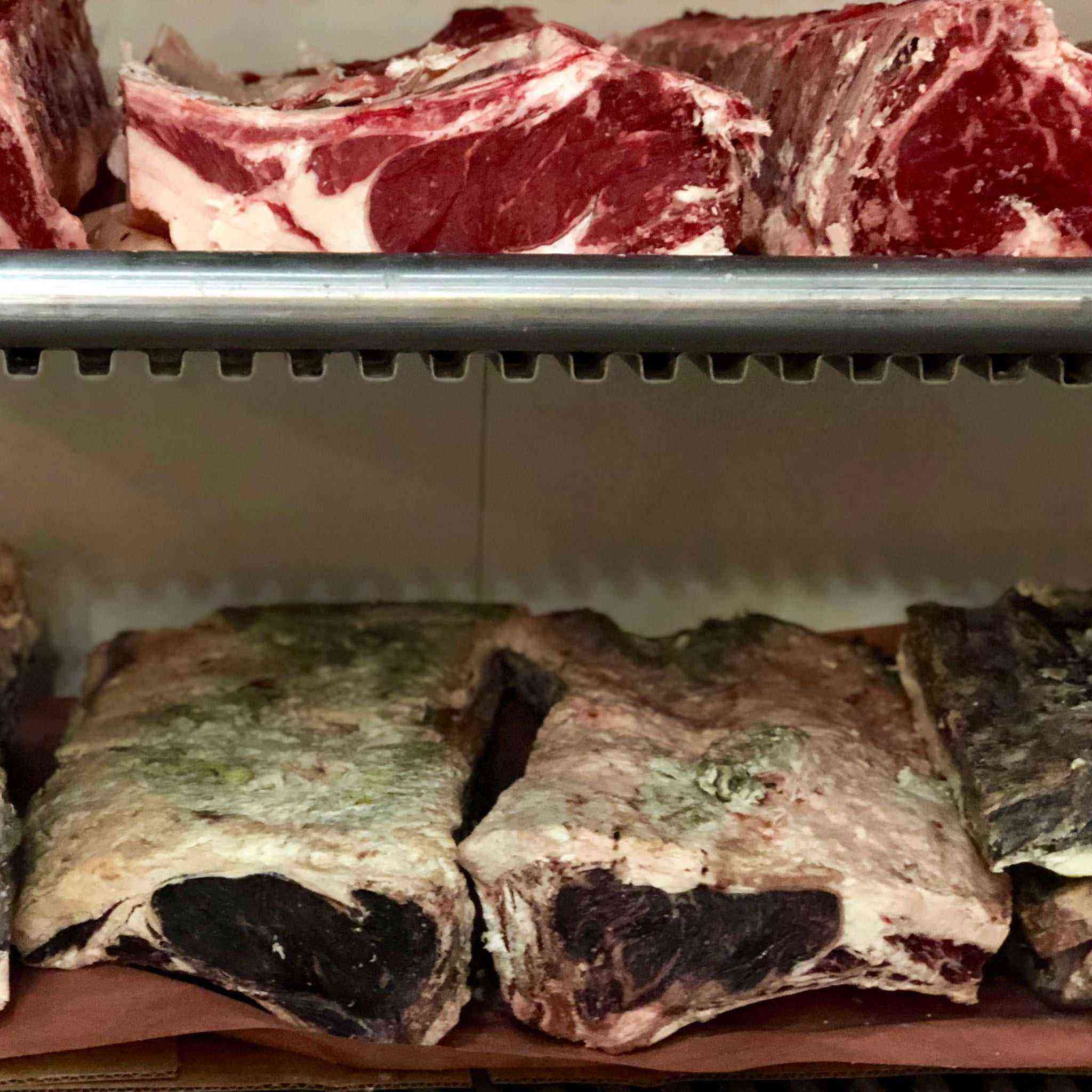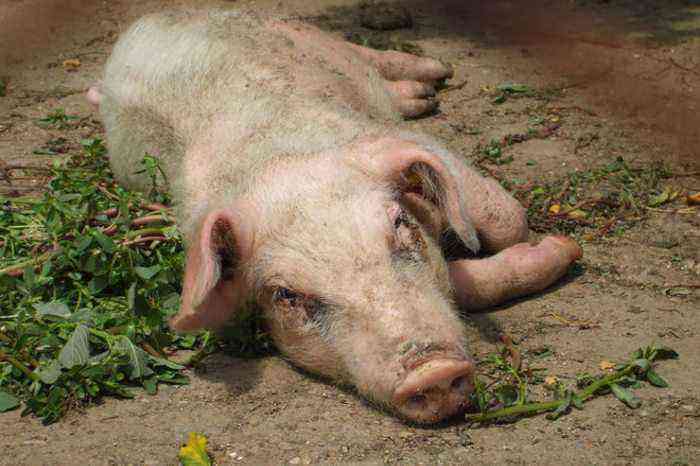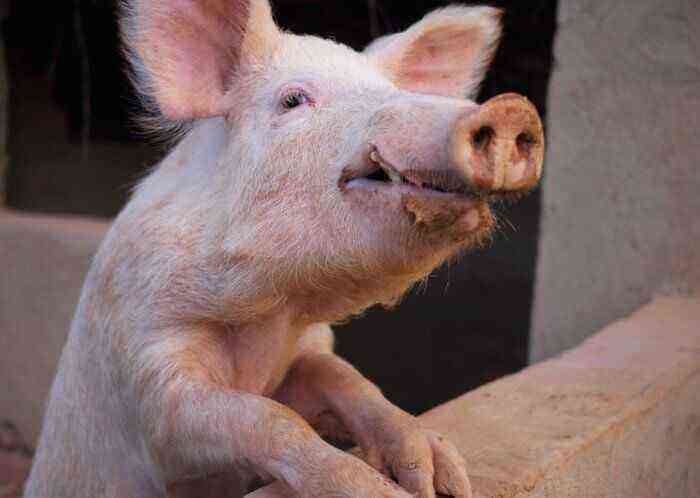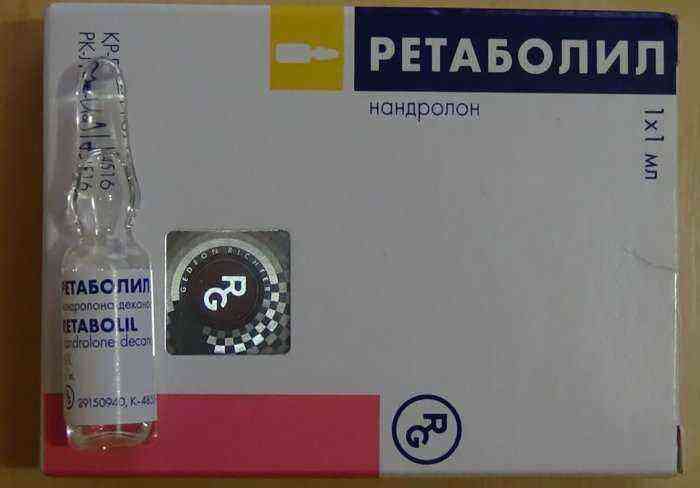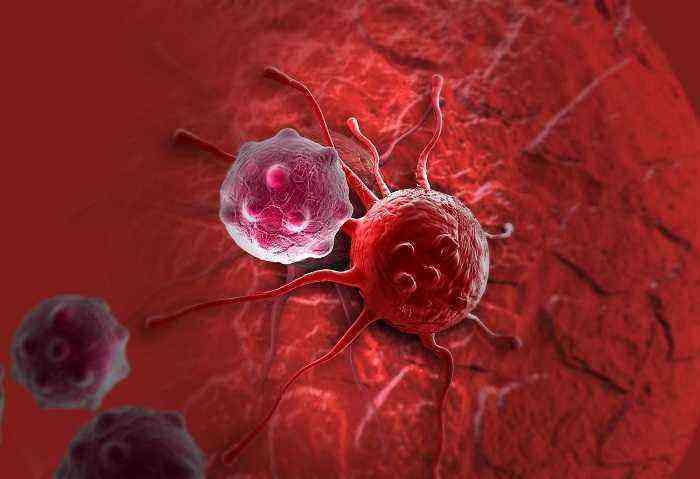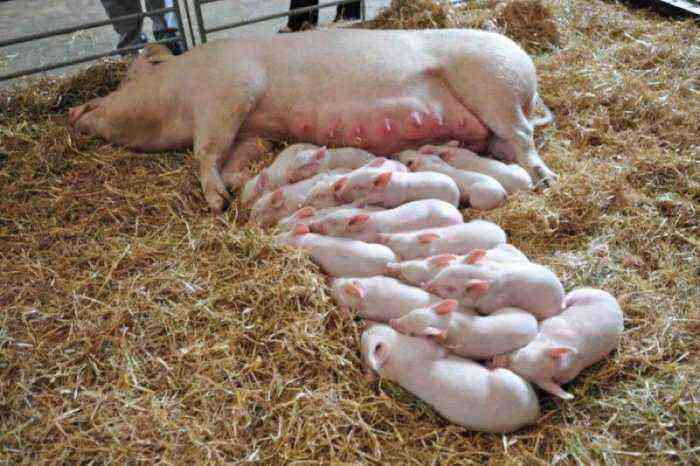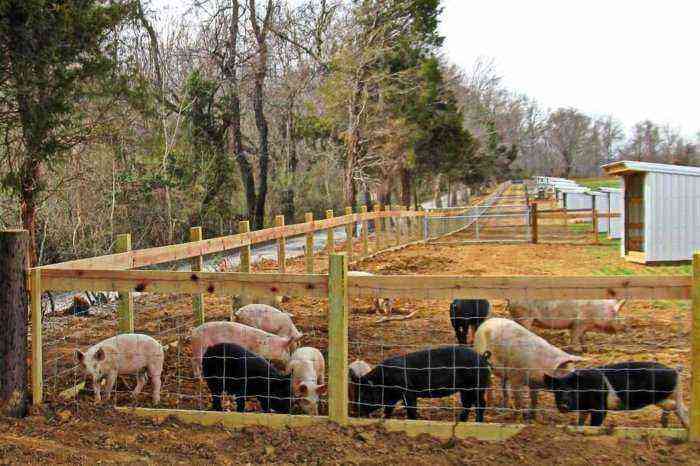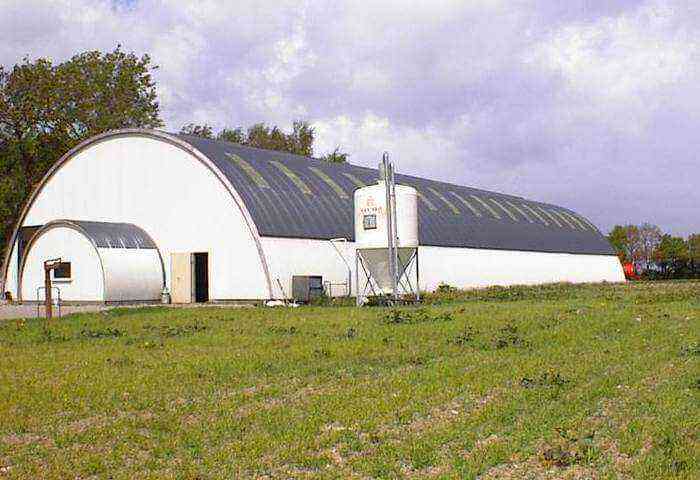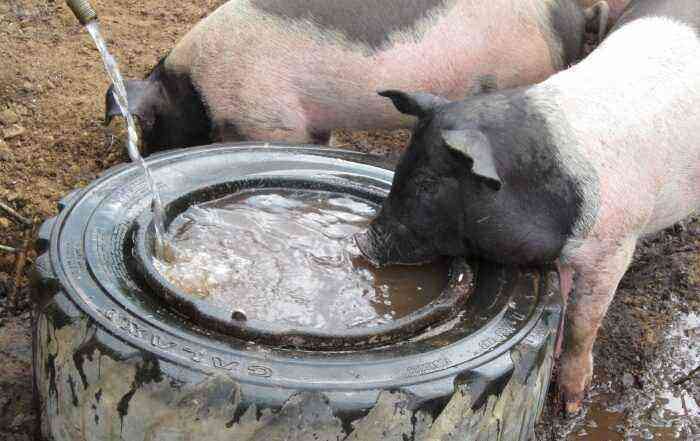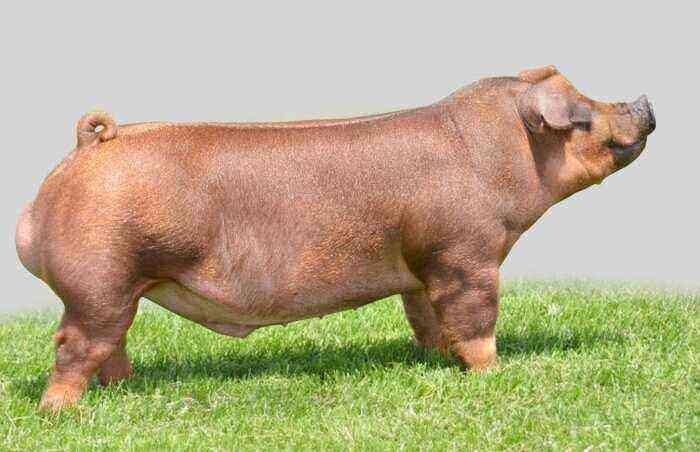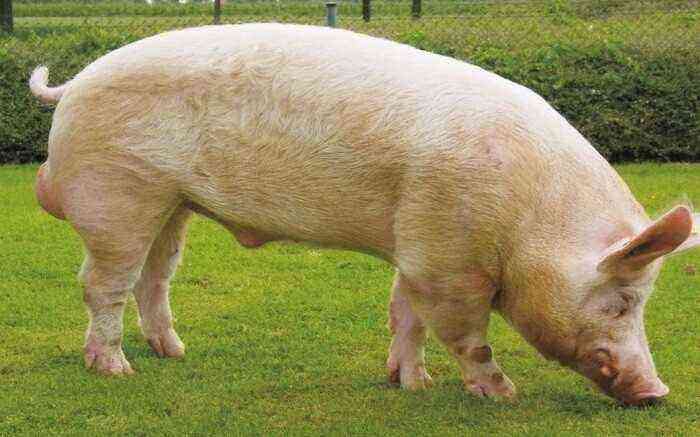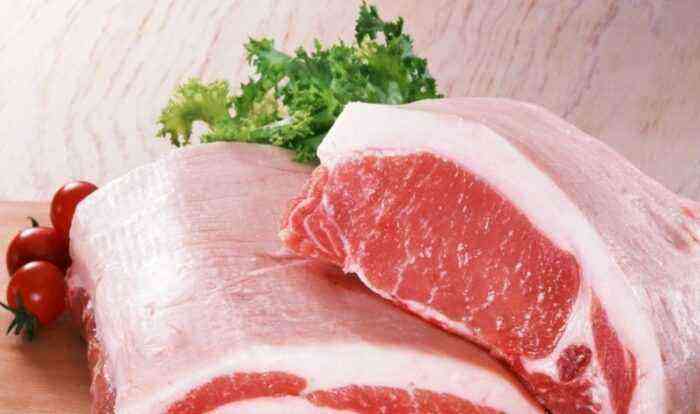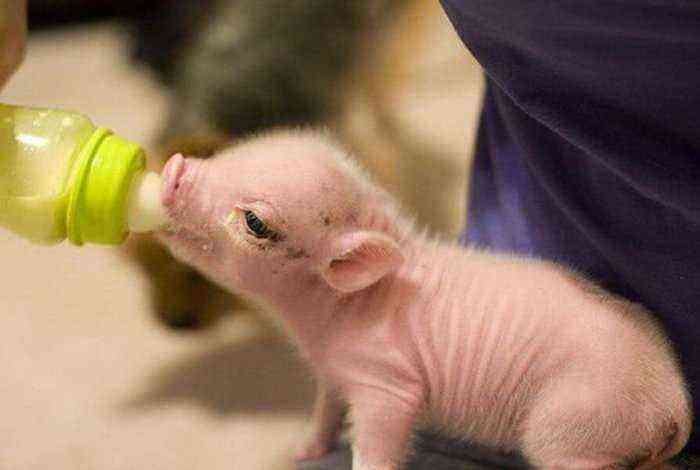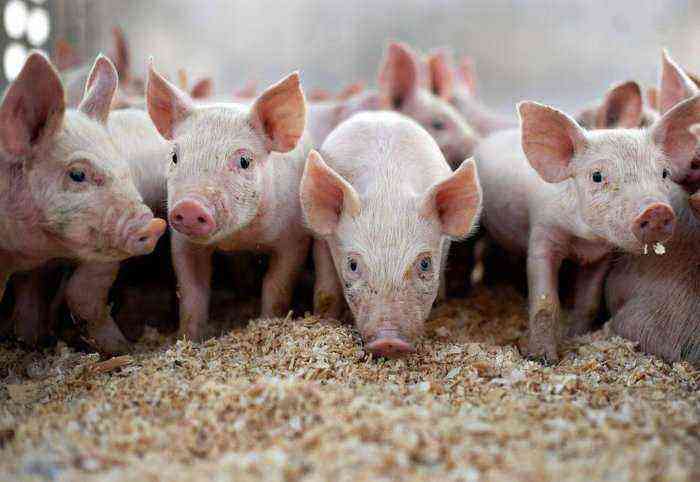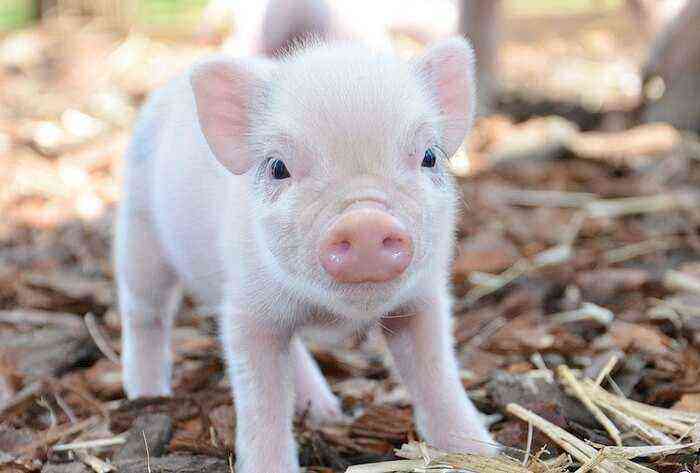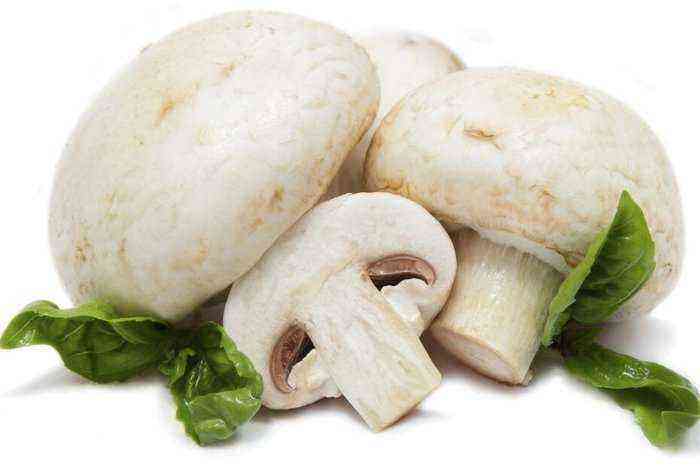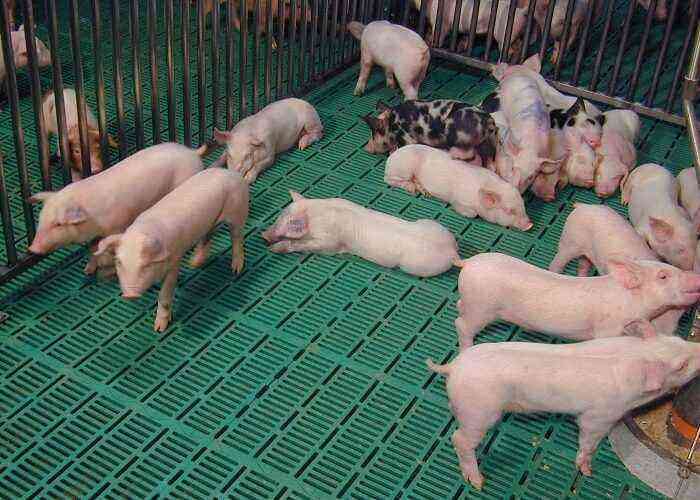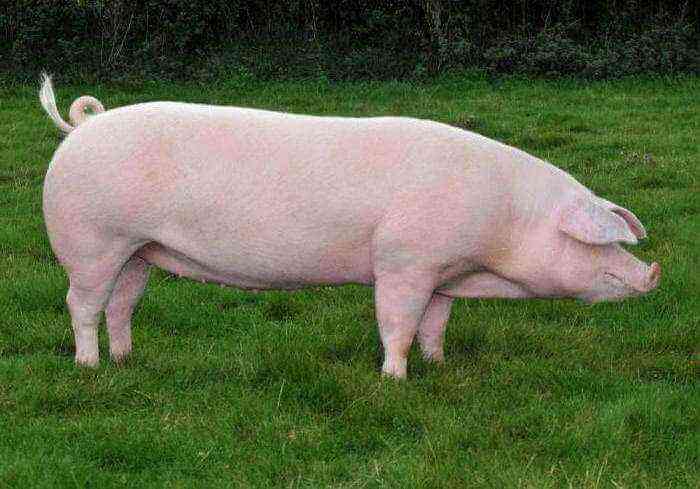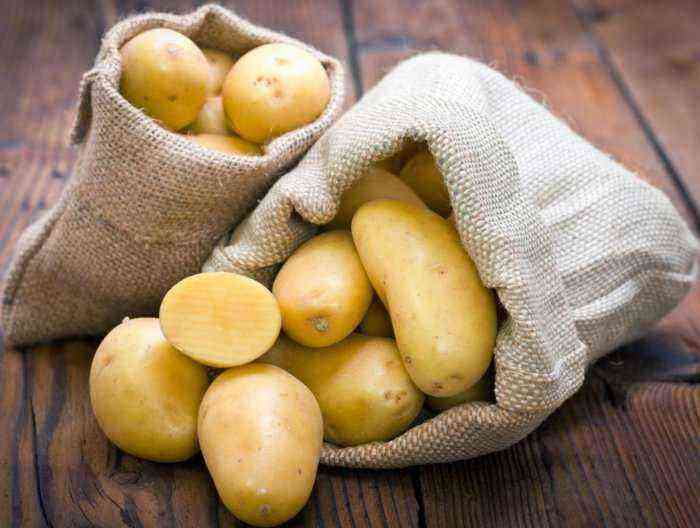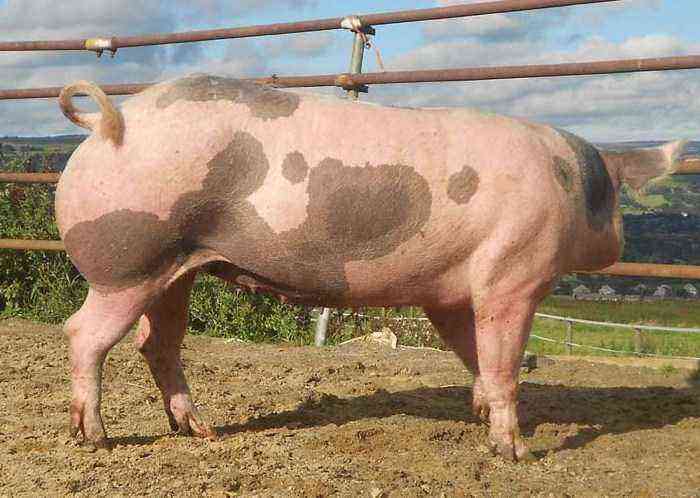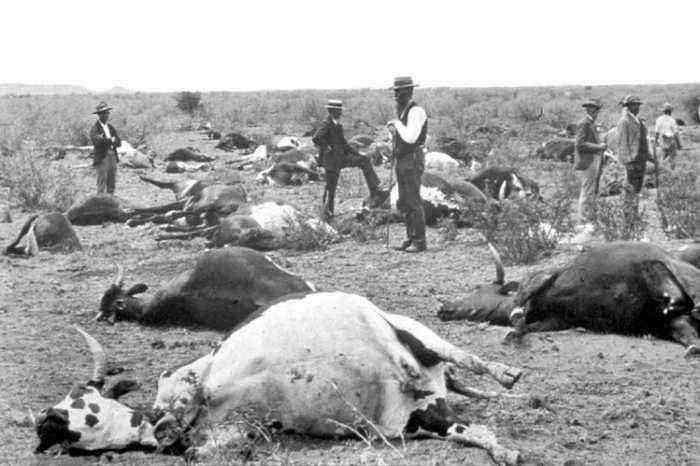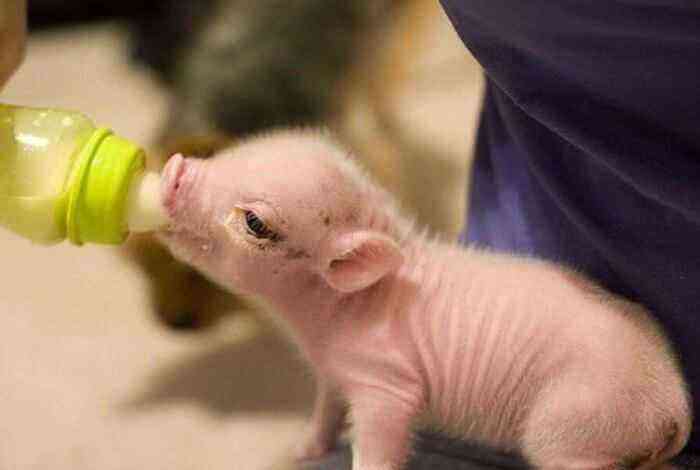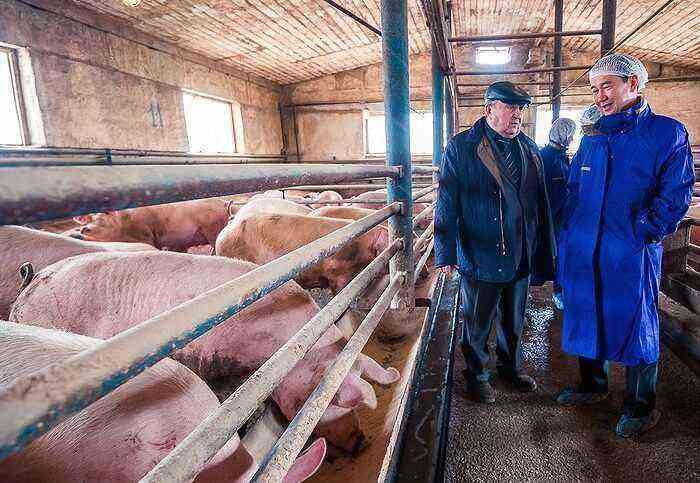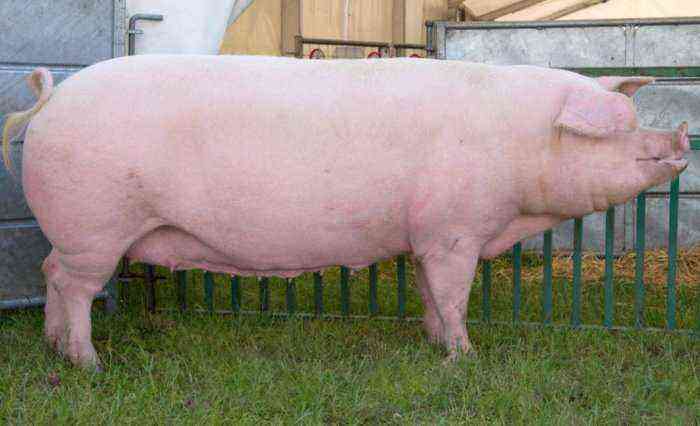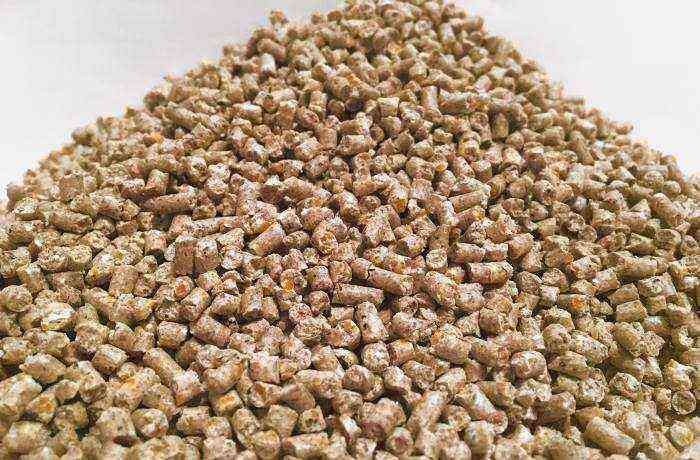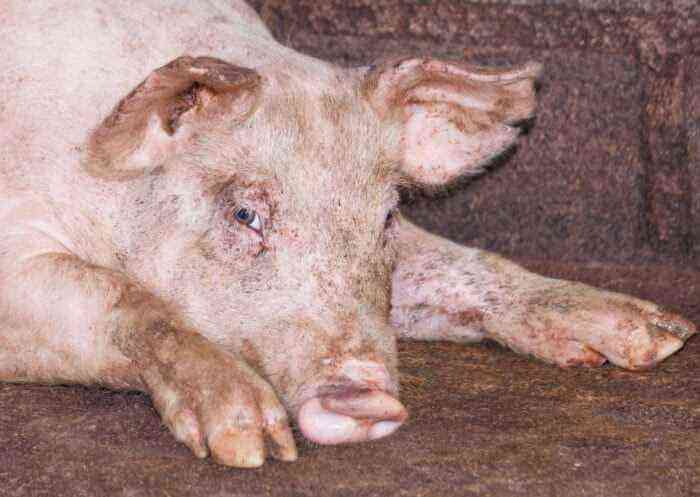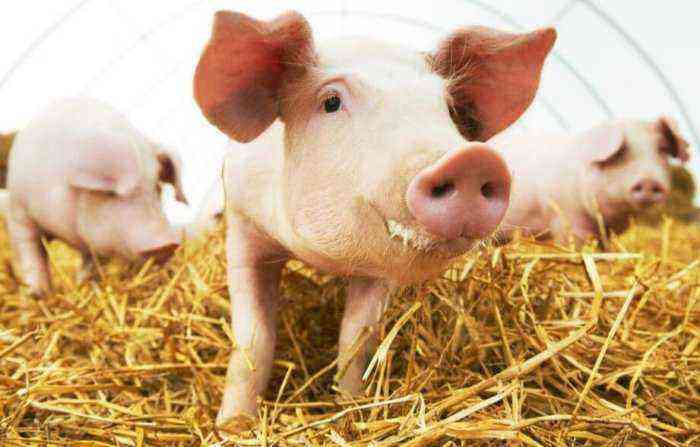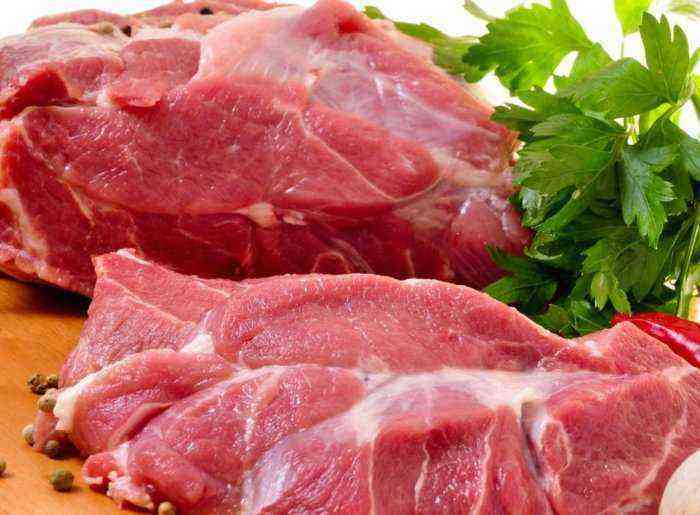The Mirgorod pig breed, which was bred in Ukraine in the middle of the 20th century, gradually gained popularity not only in this country, but also in neighboring countries. As a result of many years of work, it was possible to obtain a breed that is not distinguished by high demands on the conditions of detention and nutrition, and has a lot of positive qualities. What characteristics are characteristic of the Myrogorod pig, what is the productivity of the breed, how to keep these animals, we will consider in this article.
Mirgorod pig
Characterization
It is important to study the characteristics of the Mirgorod pig breed in order to get a complete picture of the quality of meat, fat, the features of growing these animals and their productivity.
Origin
The Mirgorod pig breed was first bred by breeders in Ukraine, near Poltava. It happened in 1940. Gifted breeders, led by Professor Bondarenko, took part in the work. This breed was obtained by crossing black-spotted pigs with purebred representatives of the following breeds:
- Berkshire.
- Medium white.
- Large white.
- Temvorskaya.
- Large black.
Reference. Mirgorodskaya is one of the best breeds of the greasy direction.
Breed description
The Mirgorod pig does not have a capricious disposition, it is omnivorous, so farmers do not have problems with feeding. These animals adapt well to different climatic conditions. They are grown to produce fat, which is highly valued in the market for its incomparable taste.
Mirgorod pigs begin to accumulate fat at an early age, so they need to be castrated as early as possible. The meat of this breed can hardly be called high-quality – there is not so much of it in the carcass, moreover, it is inferior in taste and nutritional value to the meat of other breeds of pigs.

The meat of this breed can hardly be called high quality.
Distinctive features of these animals:
- They are unpretentious.
- Easily adaptable.
- Stress resistant.
- Adapted to grazing.
- They have strong immunity.
Appearance
Consider the external characteristics of animals:
- The body is strong, fleshy.
- The body is wide.
- The back is straight.
- Rounded deep chest.
- The limbs are short, stocky.
- Hooves of the correct form.
- The hams are massive.
- The head is of medium size, the profile is slightly concave.
- The ears are small, mostly straight.
- The skin is smooth, there are no folds.
- There is a lot of bristles, it is shiny, smooth.
- Color of a light shade with red and dark spots.
Upon reaching adulthood, the boar grows up to 180 cm in length, while it weighs, on average, about 310-320 kg. The body length of an adult female varies within 160 kg, and its weight reaches 220 kg.
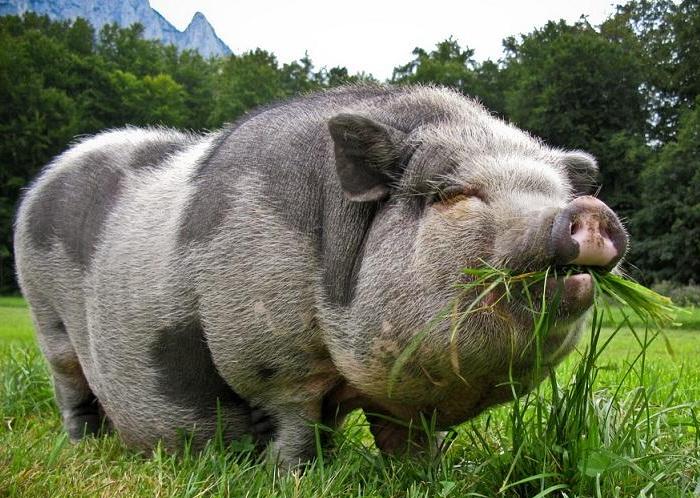
Mirgorod breed
Productivity
Mirgorod pigs are highly productive. They gain weight quickly. The average weight gain in piglets per day is about 500 grams, in adults – 650 g. By the age of six months, the body weight of these animals exceeds 100 kg. Their breeding is beneficial for farmers, since for every kilogram of weight gain they need to spend about 3 feed units. It is possible to save a little on maintenance in the summer, when animals graze on pastures.
Sows of the Mirgorod breed are prolific. They are able to bring up to 13 piglets in one farrow. Cases of cannibalism in Mirgorod pigs are very rare, because sows are distinguished by excellent maternal qualities. They are incapable of harming their offspring.
Reference. Piglets are distinguished by good survival, they have strong immunity.
Advantages and disadvantages
The advantages of this breed include the following qualities:
- These animals are omnivores.
- Quickly and easily adapt to different conditions of detention.
- Their fat has an excellent taste.
- Pigs gain weight quickly.
- High survival rate, strong immunity.
- Good fertility in females, the ability to take care of offspring.
- Grazing adaptability.
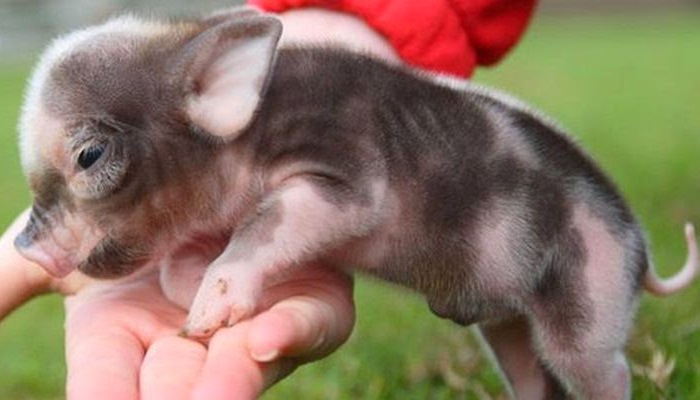
Good fertility in females
Among the shortcomings are:
- There is not enough meat in the carcass.
- Its quality is below average.
- Animals do not tolerate cold and suffer from drafts (which is why they are grown mainly in regions with a warm climate).
Feeding
The rate of weight gain of animals and the taste of products depend on the quality of nutrition. Adults are provided with three meals a day, in summer two meals a day are allowed, provided that the pigs graze on the pasture. Babies are fed more often – until the age of six months, when they are actively developing, they are given five meals a day.
Approximately half of the diet of pigs of this breed is made up of high-quality compound feed, which includes fish and meat grinding, as well as cereals. Animals must be introduced to the menu of vitamin and mineral complexes. The rest of the diet is:
- Root crops, including juicy ones.
- Good quality food scraps.
- Various vegetable crops.
- Fruit.
- Dairy.
- Fresh grass or hay.

Fresh grass
Content
The conditions in which animals are kept directly affect their health and the rate of weight gain. Mirgorod pigs do not tolerate cold and drafts, they are kept in a warm pigsty, taking care of a clean and dry litter of soft hay.
Animals do well if they have constant access to clean drinking water. For each individual, a separate machine should be organized. The room must be cleaned regularly. In summer, when pigs graze outside, you need to take care of the presence of a shed, as animals with a light color often get sunburn.
Once every 6 months, deworming is mandatory. Little piglets are vaccinated against life-threatening diseases two weeks after this procedure.
Reference. Detailed instructions on the vaccination and deworming schedule can be obtained from your veterinarian.
Male piglets are castrated, and it is recommended to do this as early as possible. At an early age, the procedure for removing the testicles is easier to tolerate. The lard of Mirgorod pigs, which were castrated soon after birth, has a particularly delicate taste, it has high quality indicators.
Most farmers speak positively about Mirgorod pigs. Caring for these animals does not require large investments and many years of experience in farming. The main thing is to take into account the characteristics of these animals and provide them with normal living conditions.

